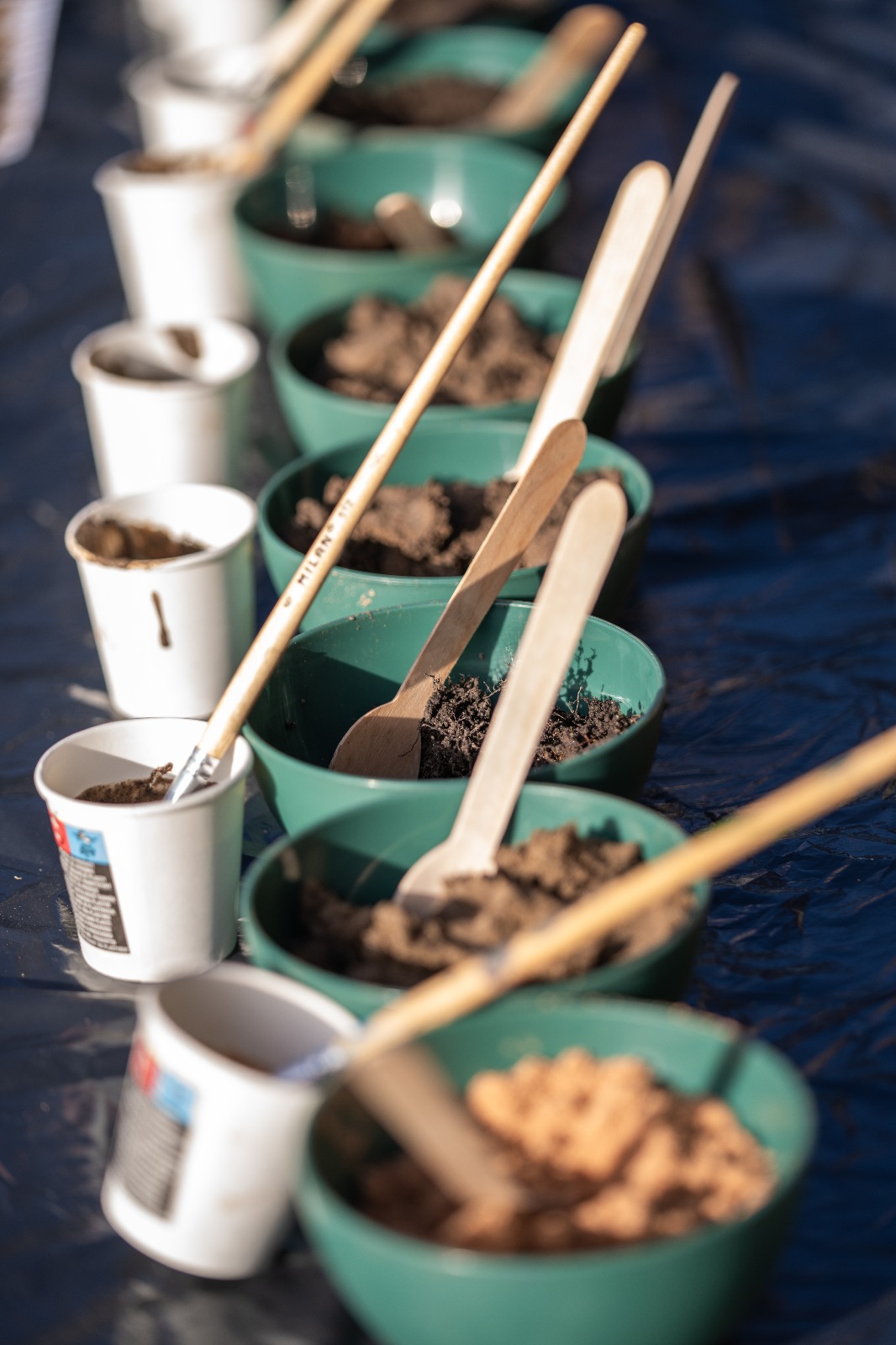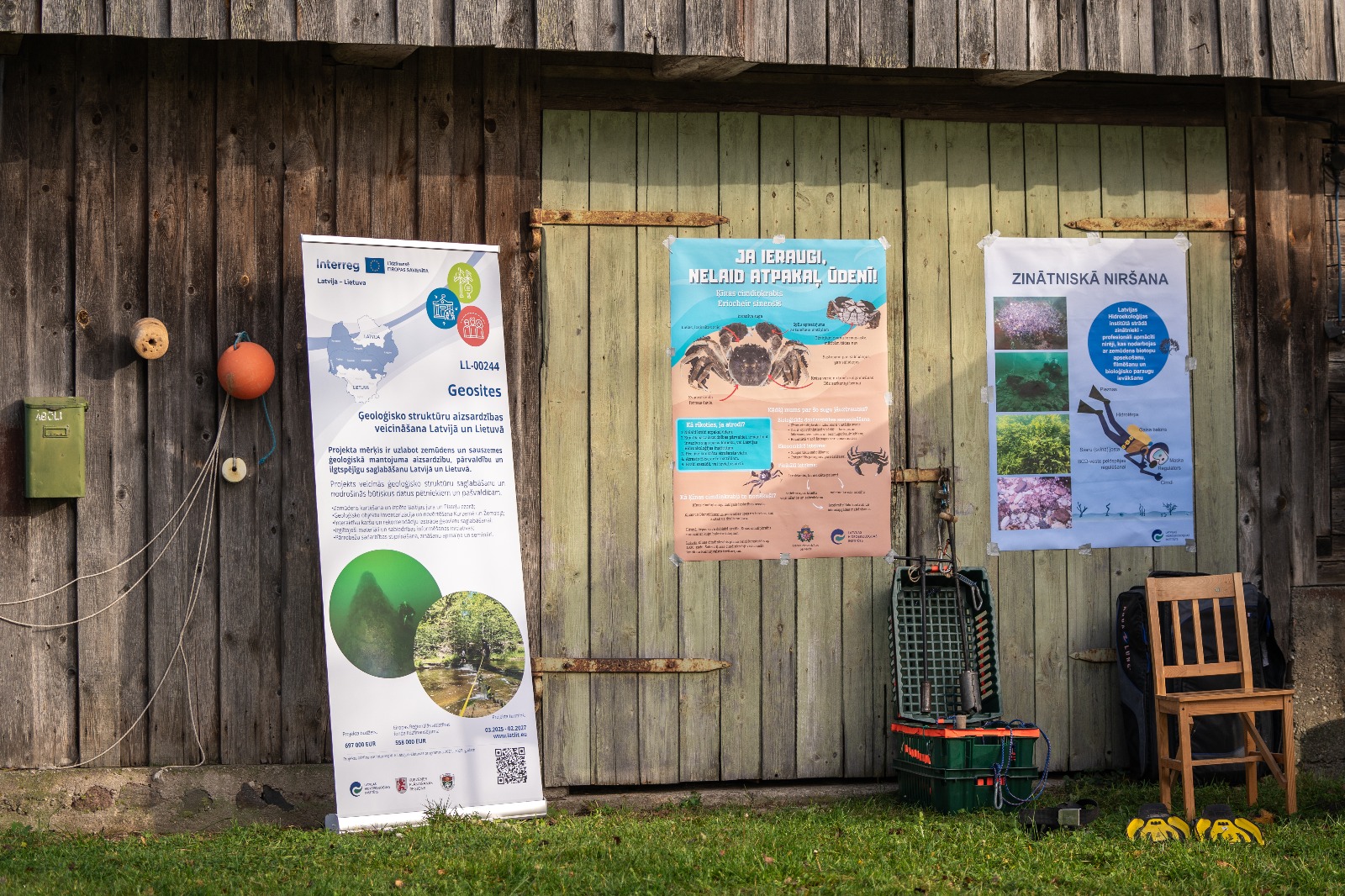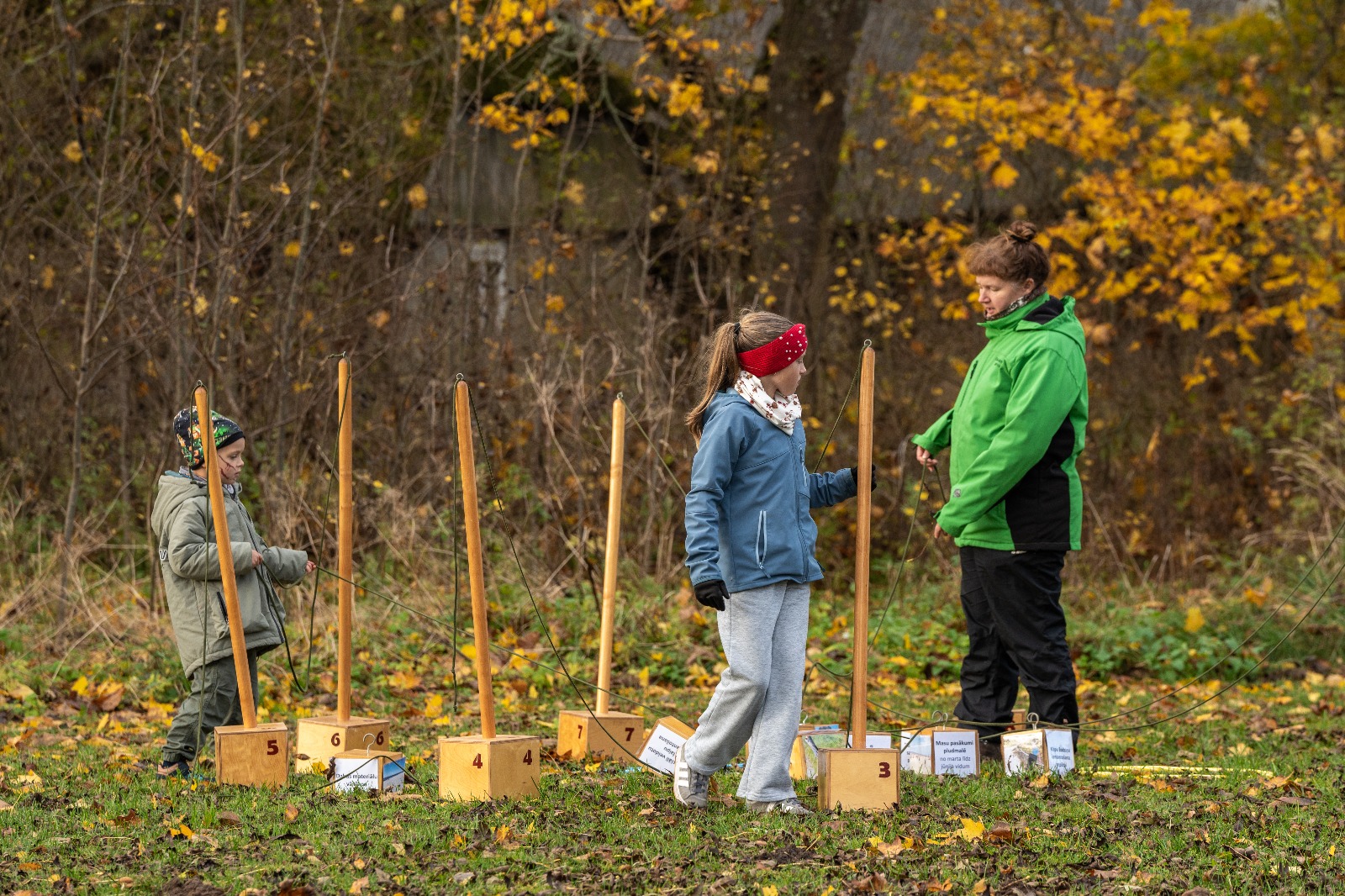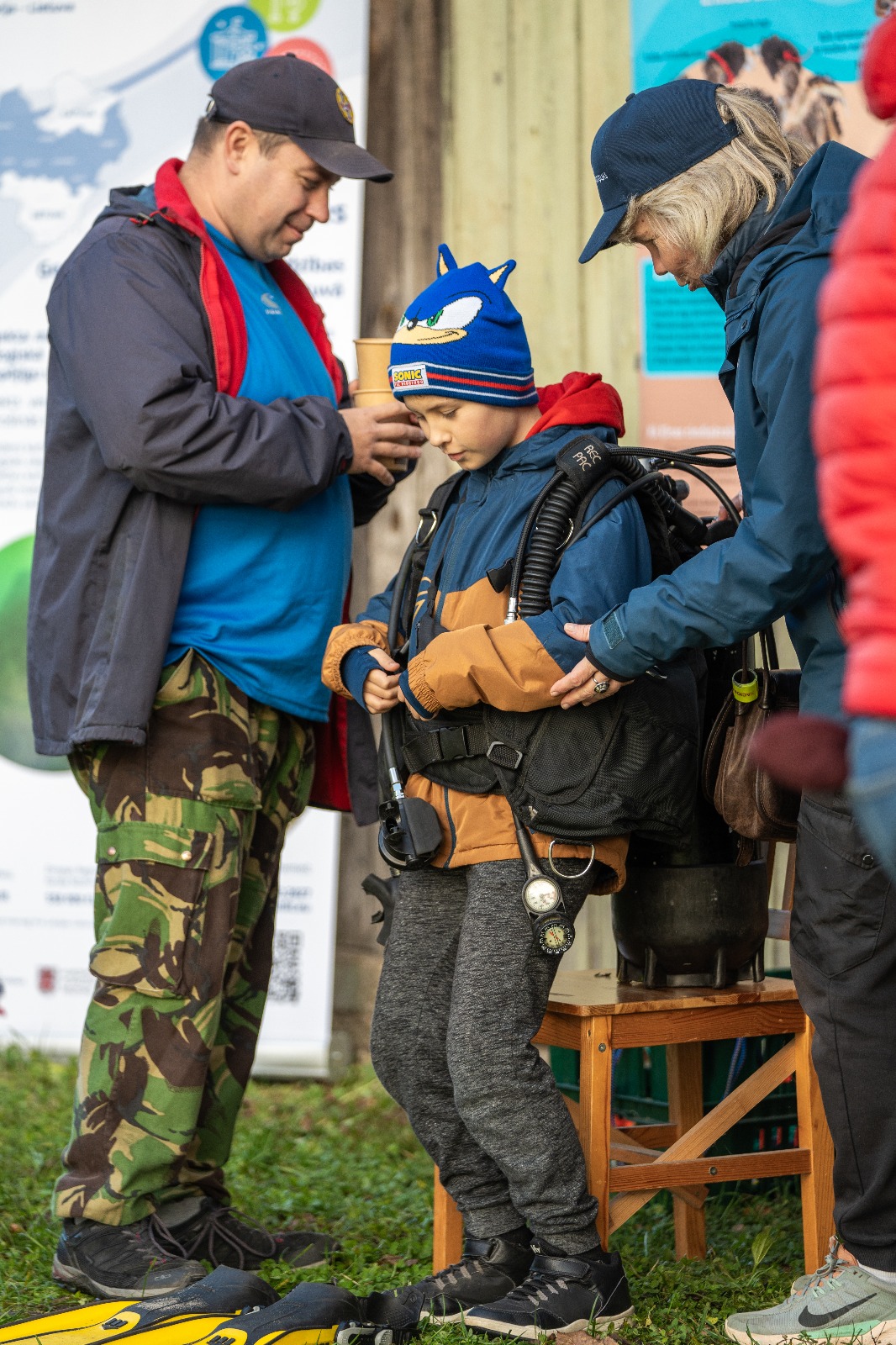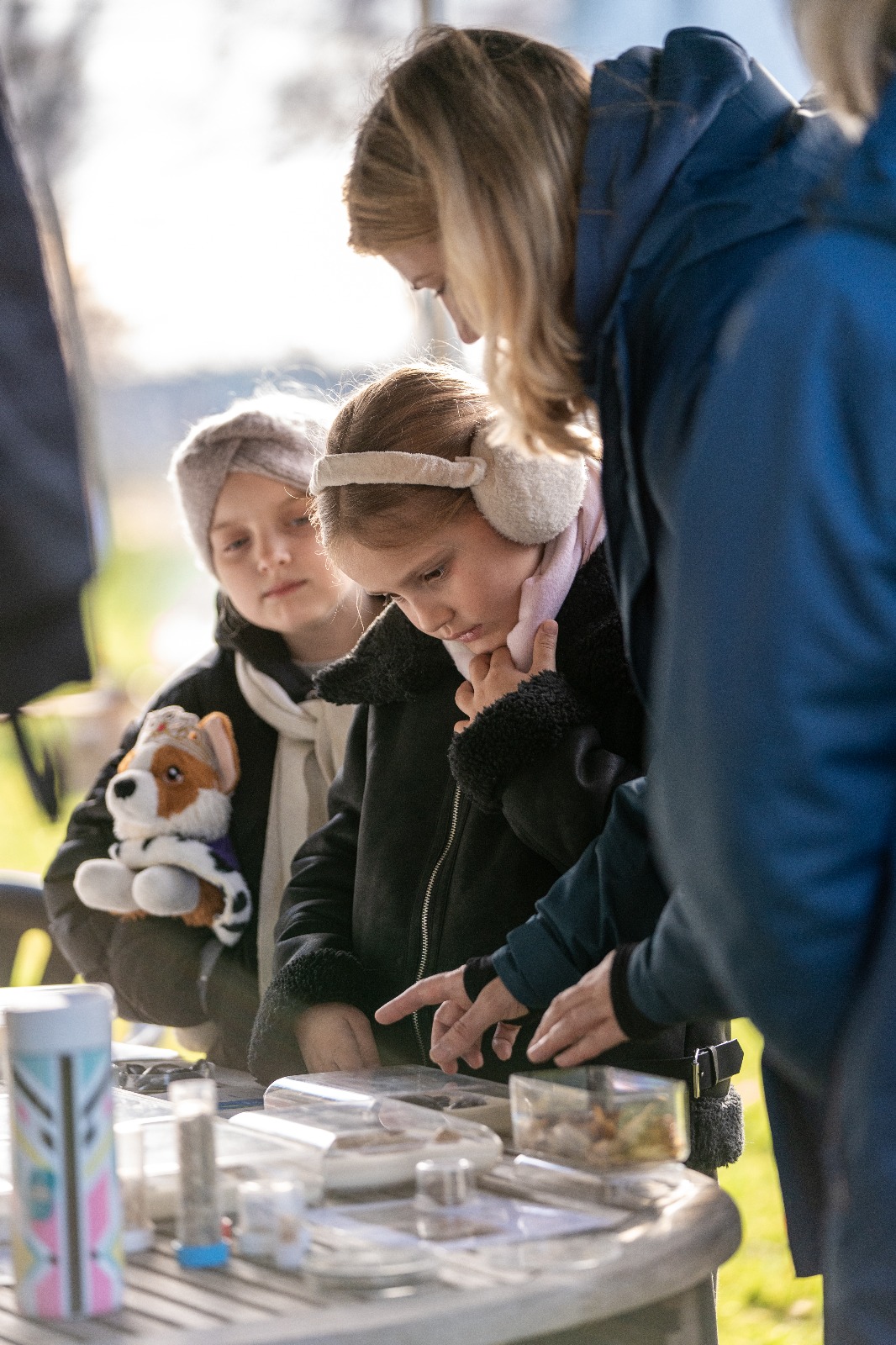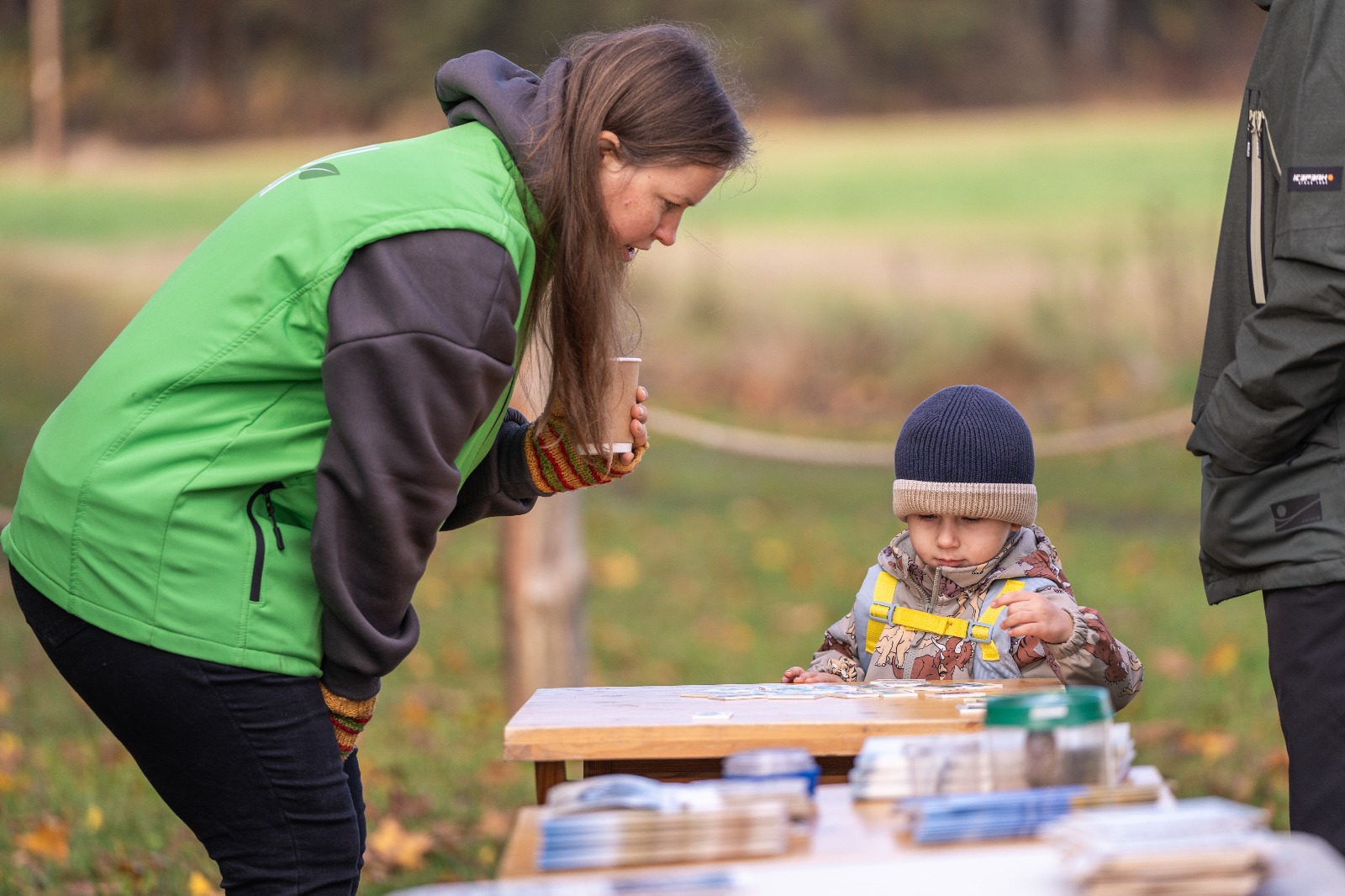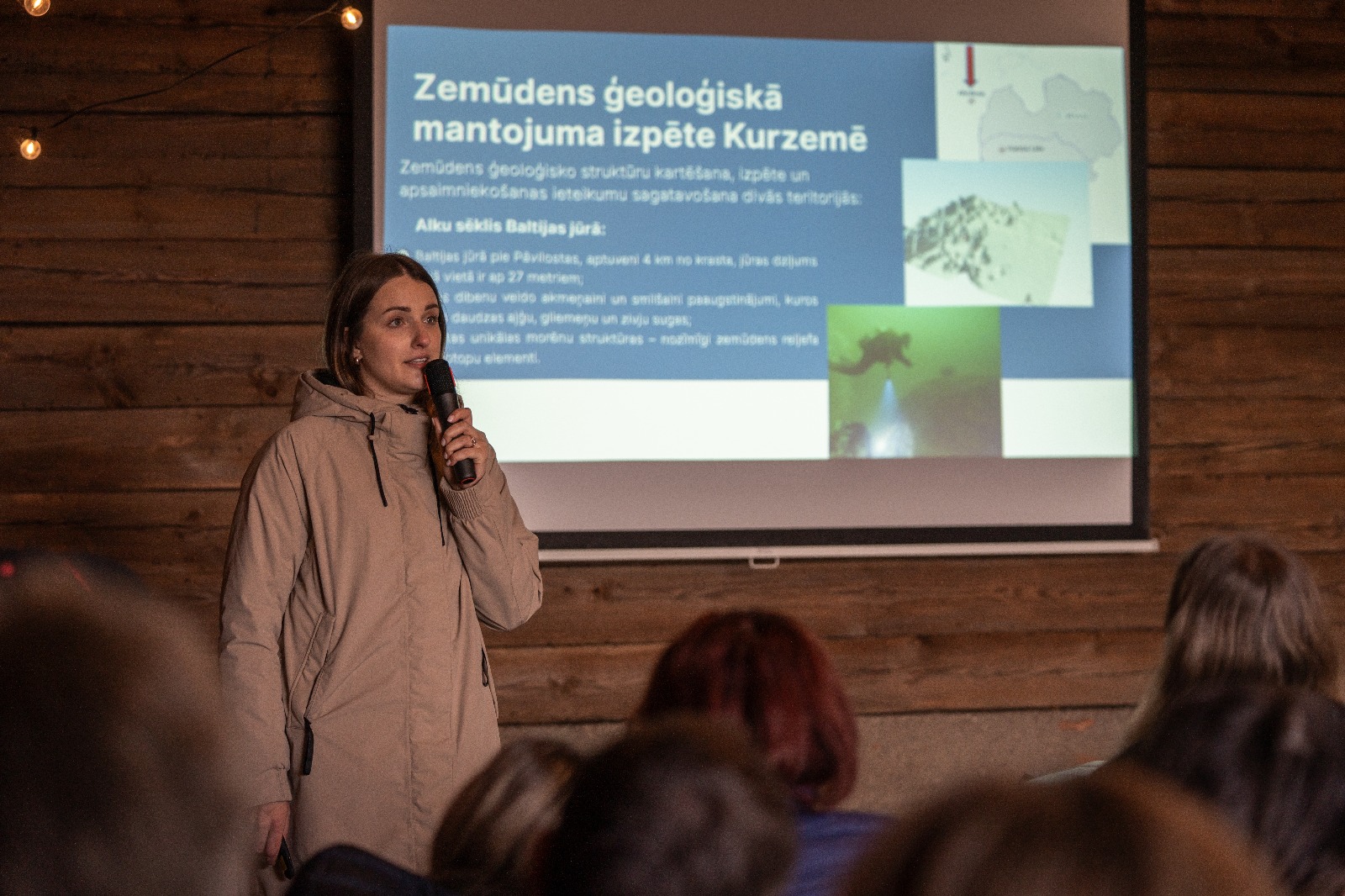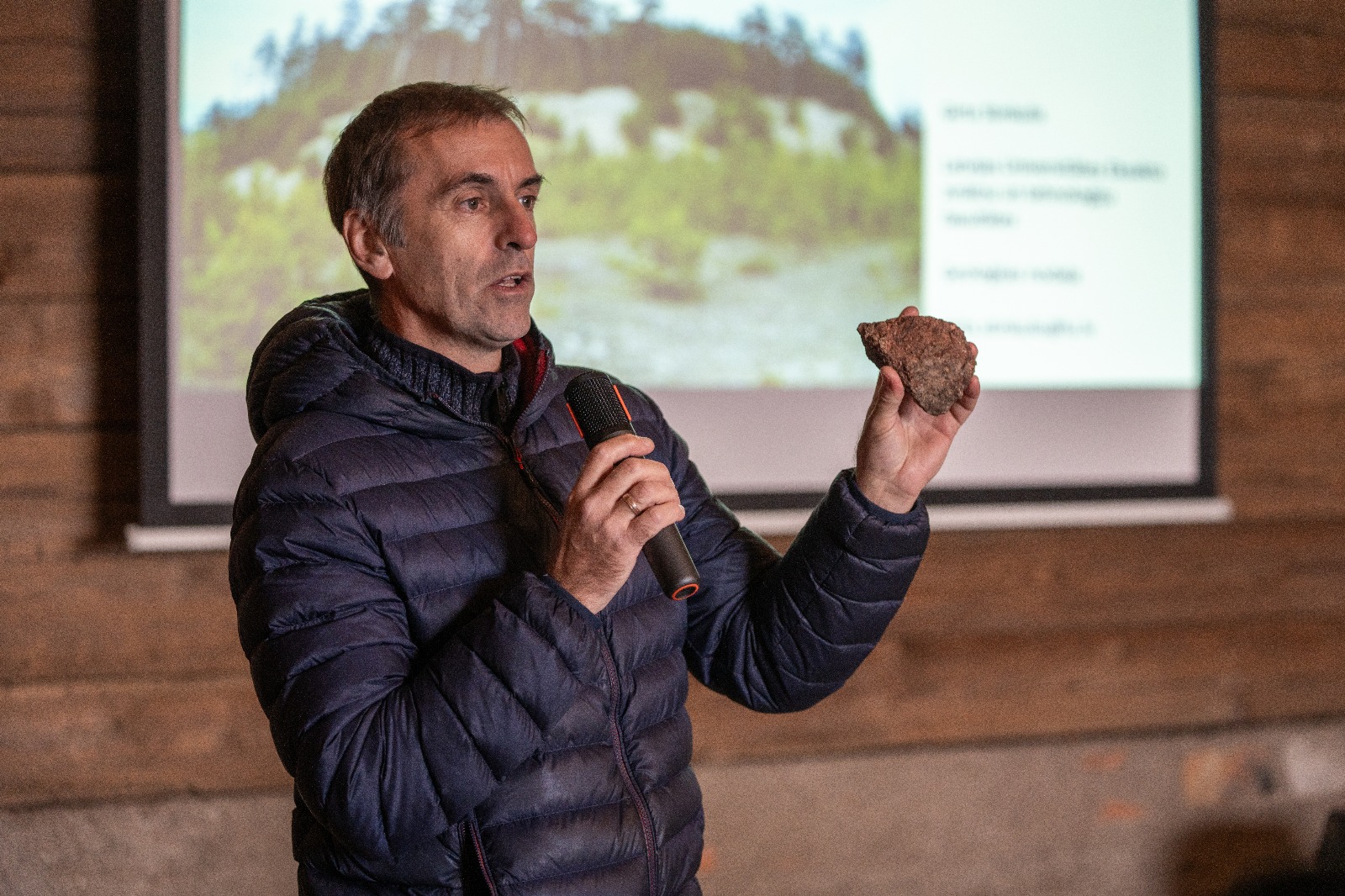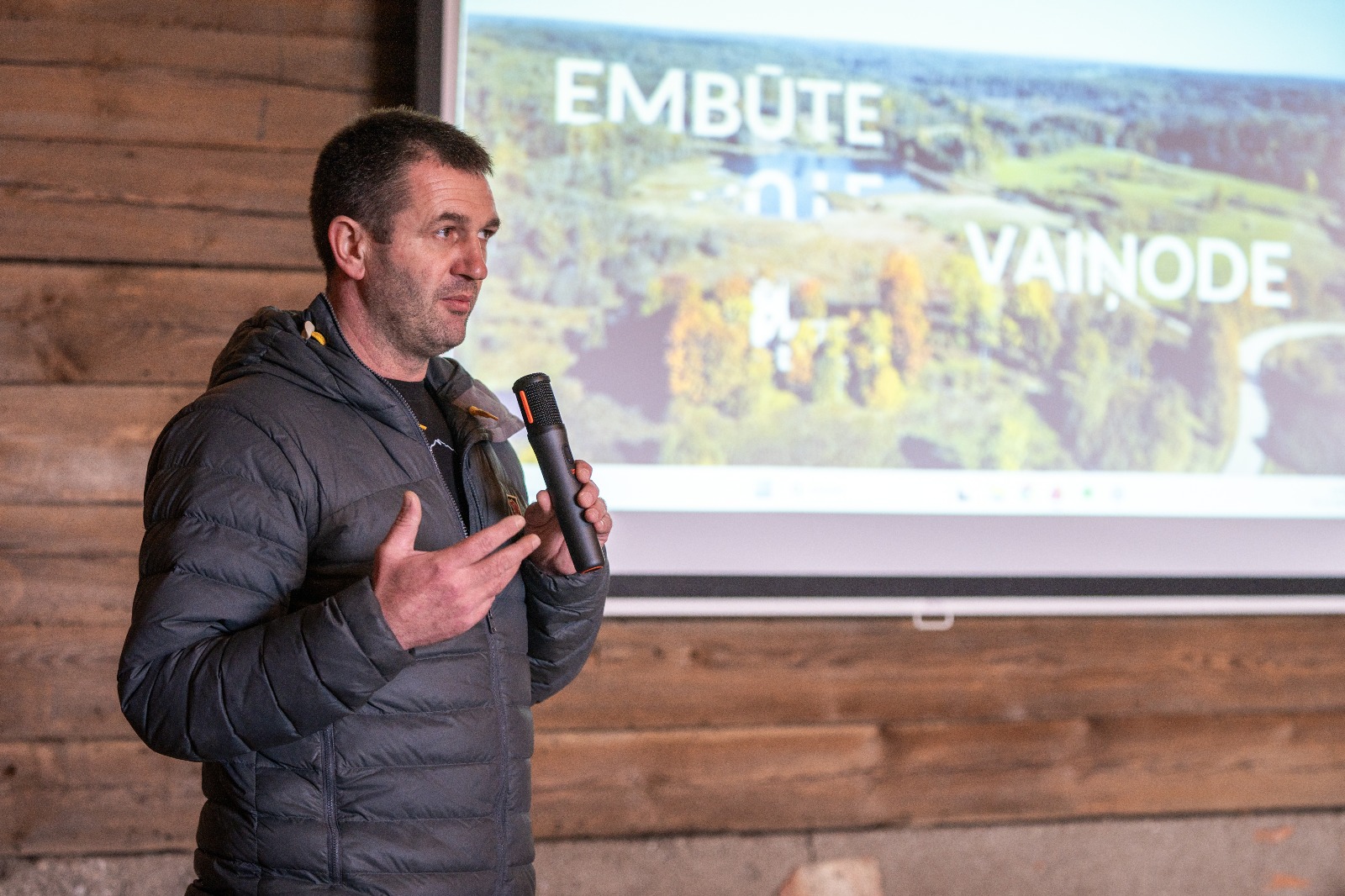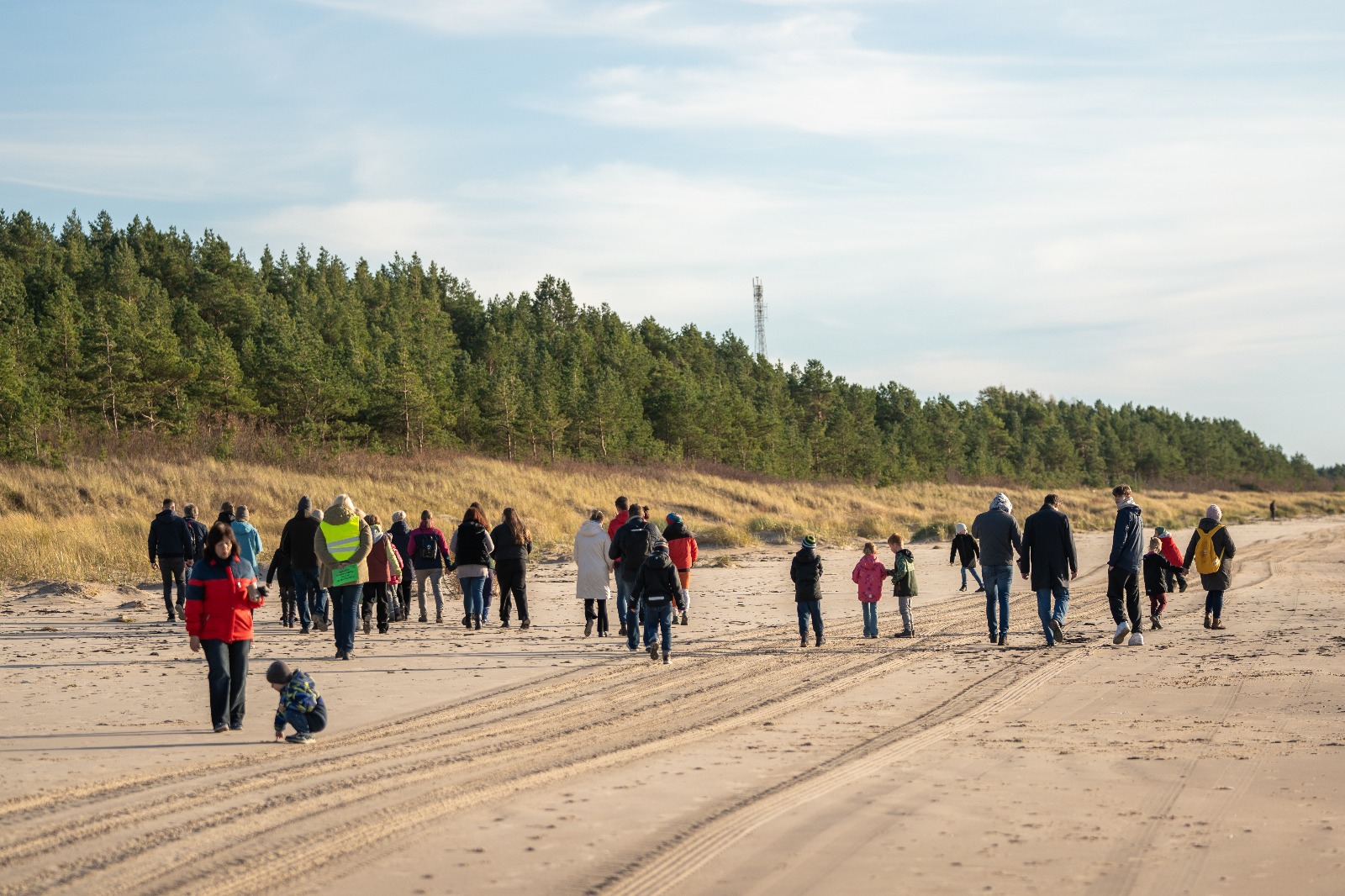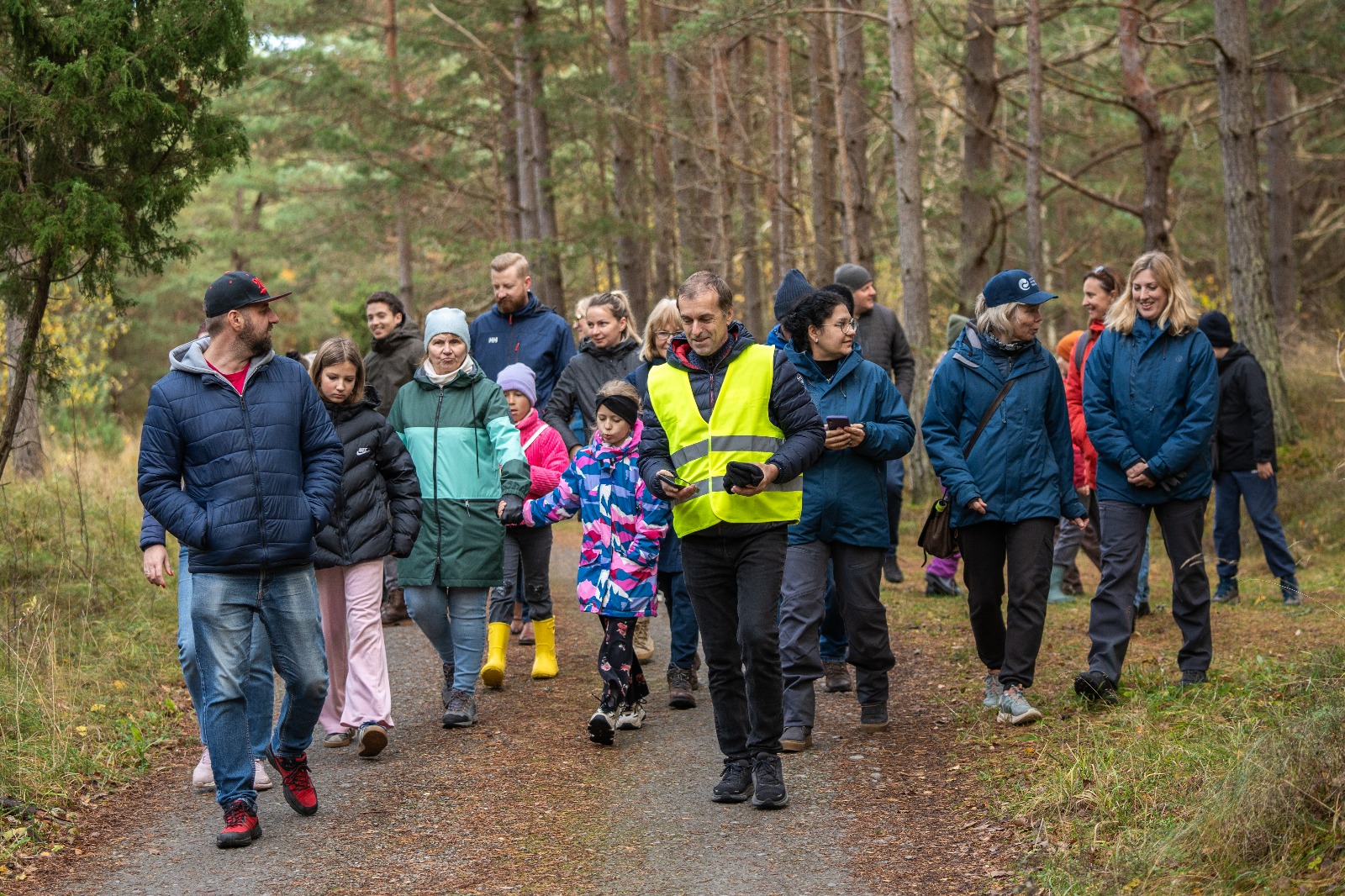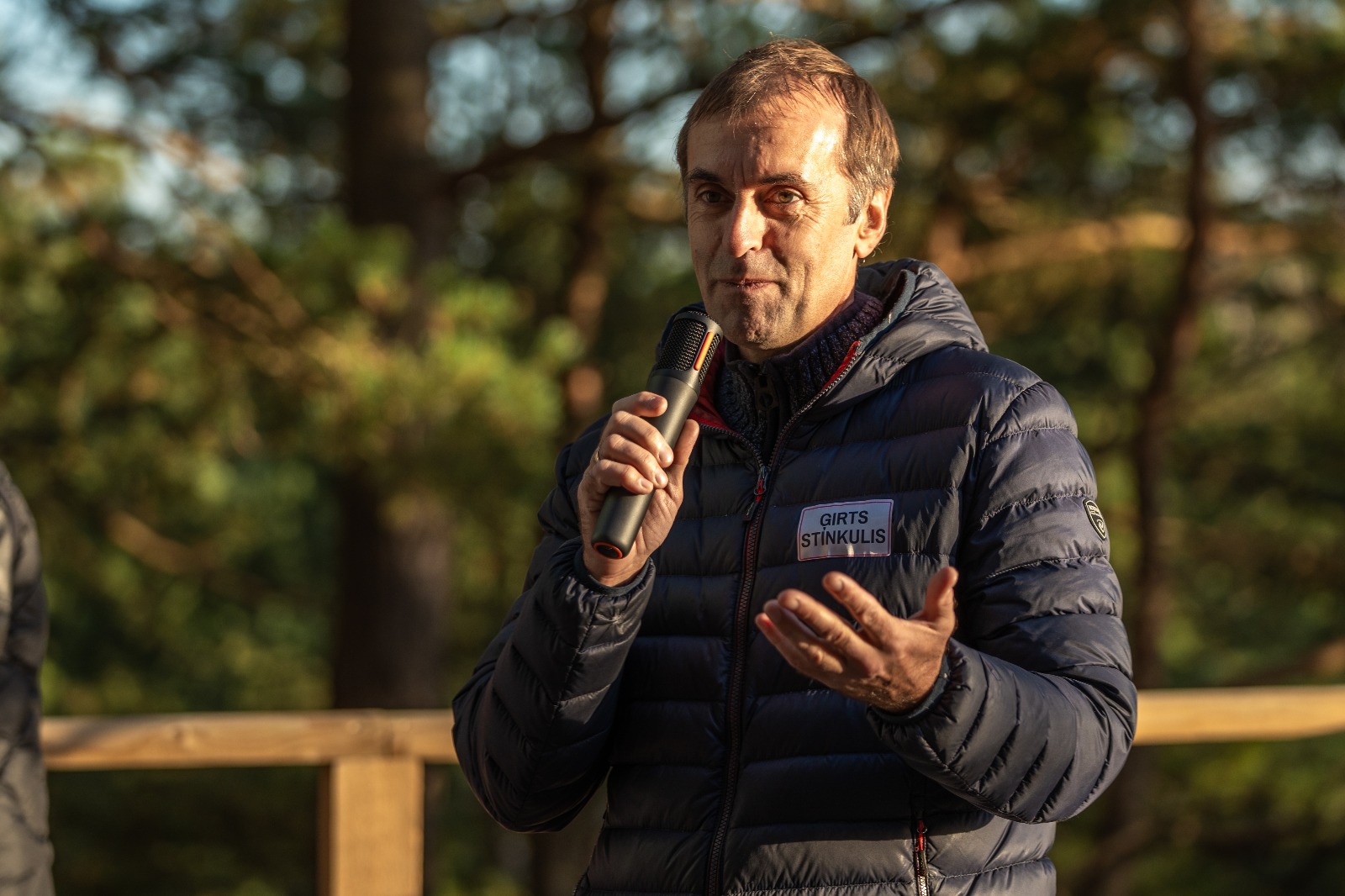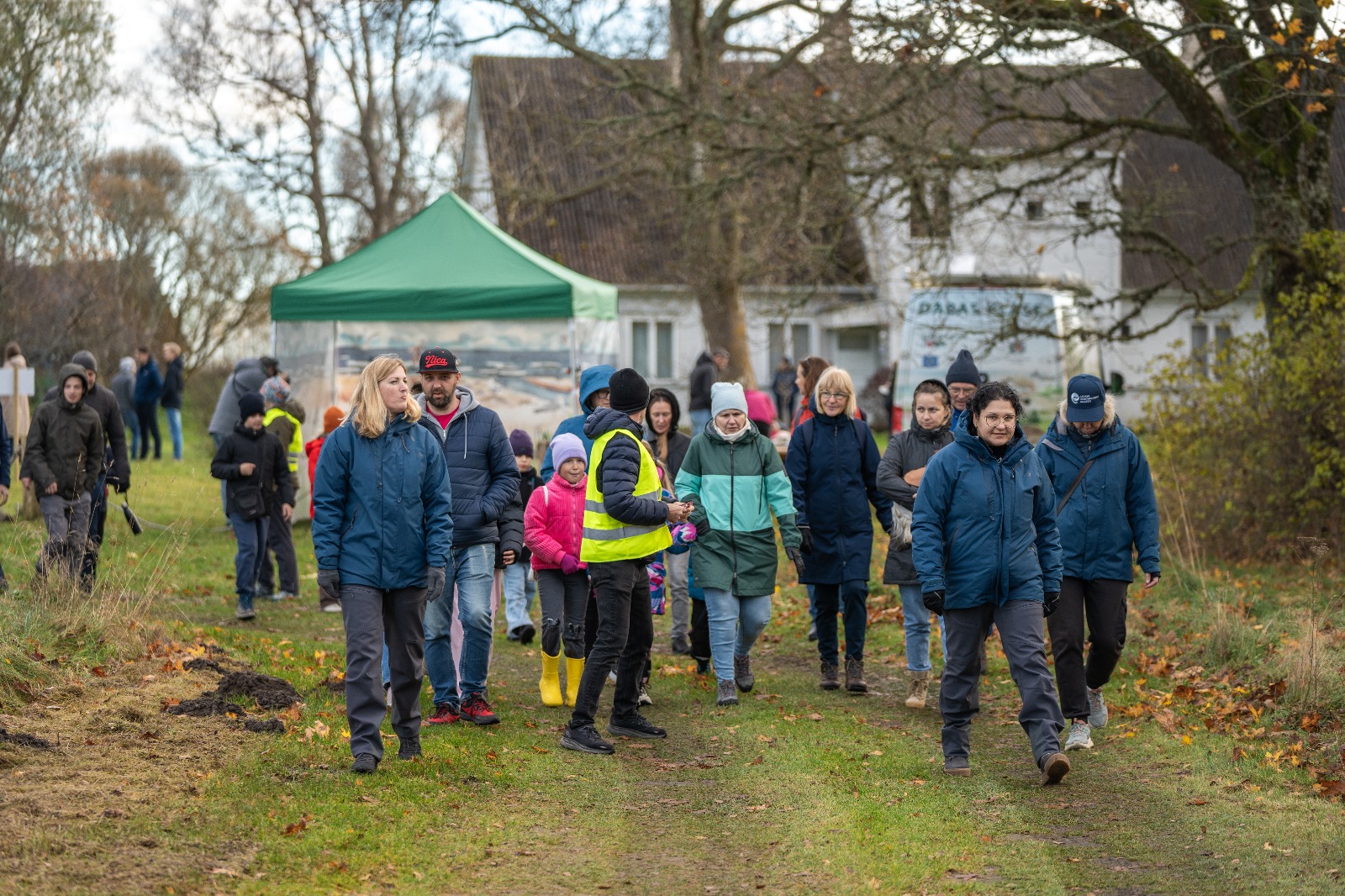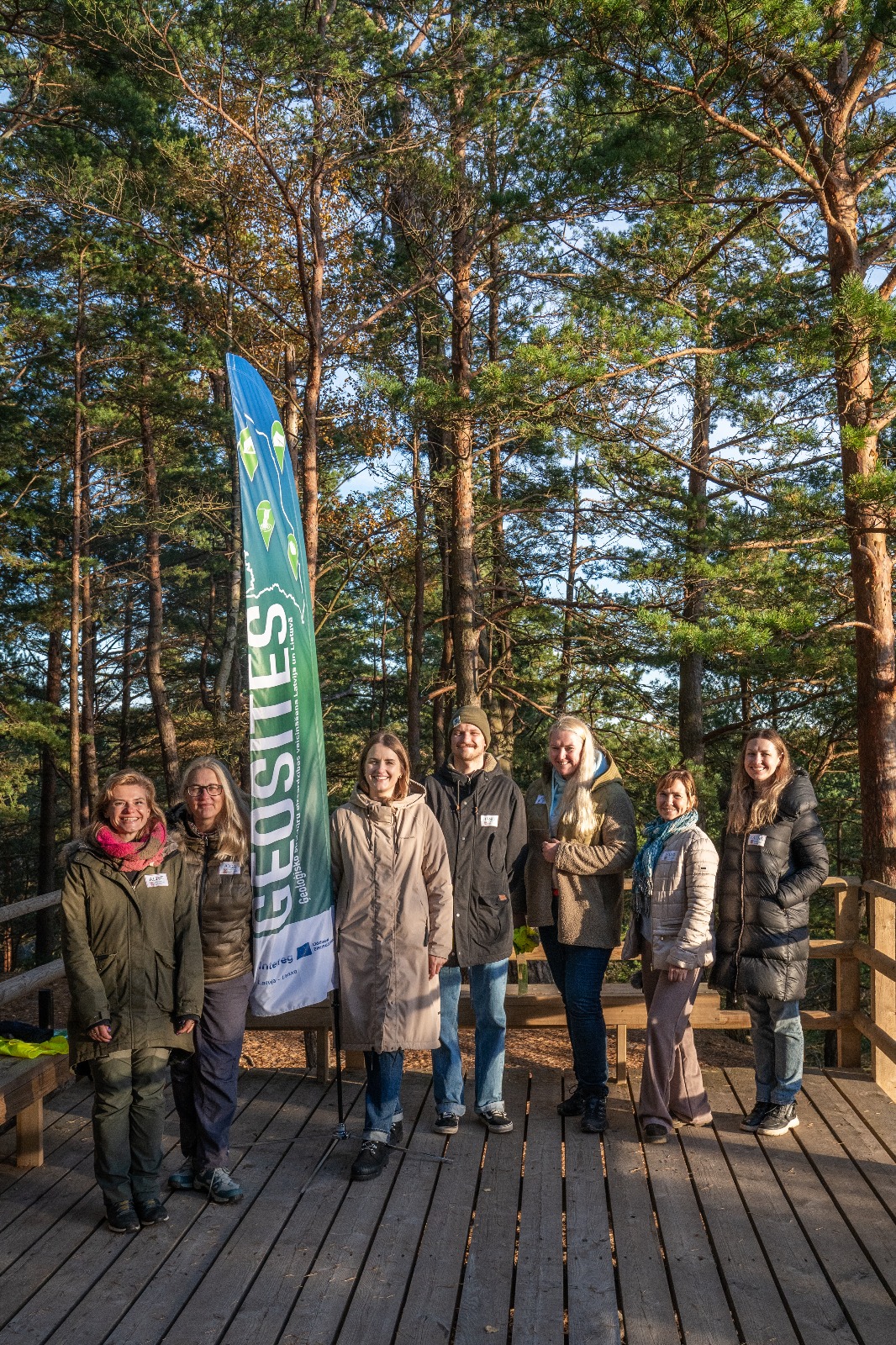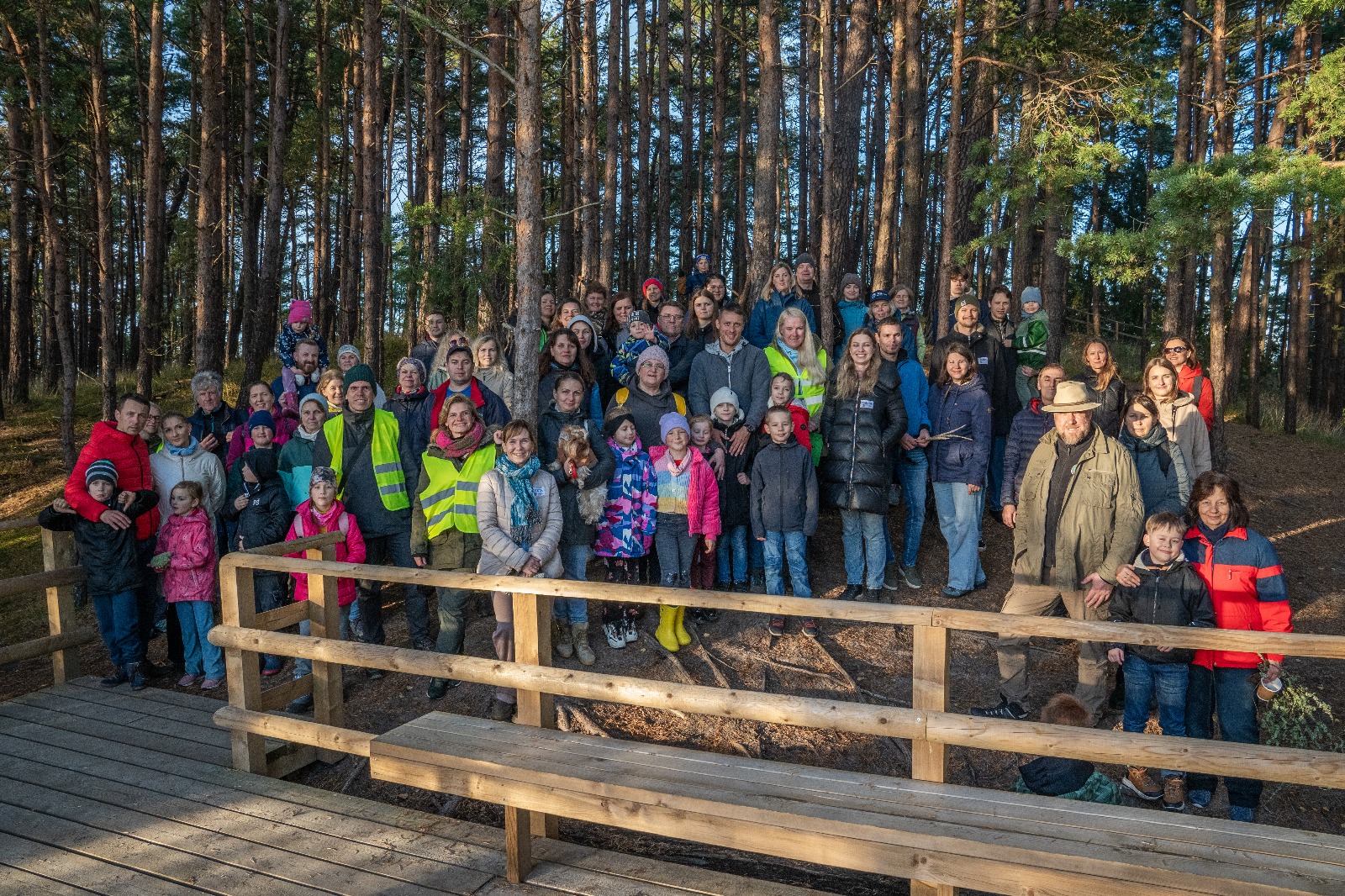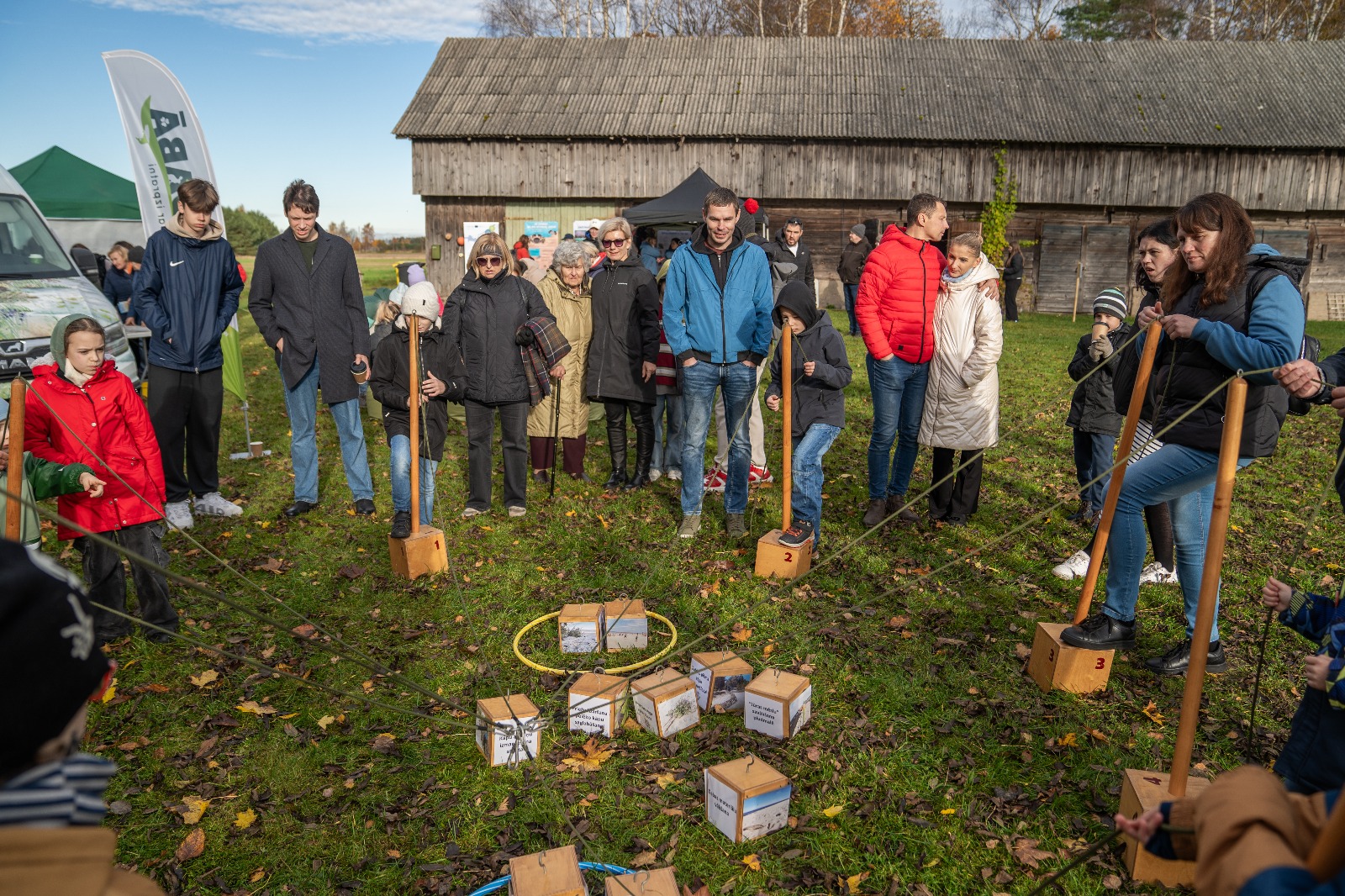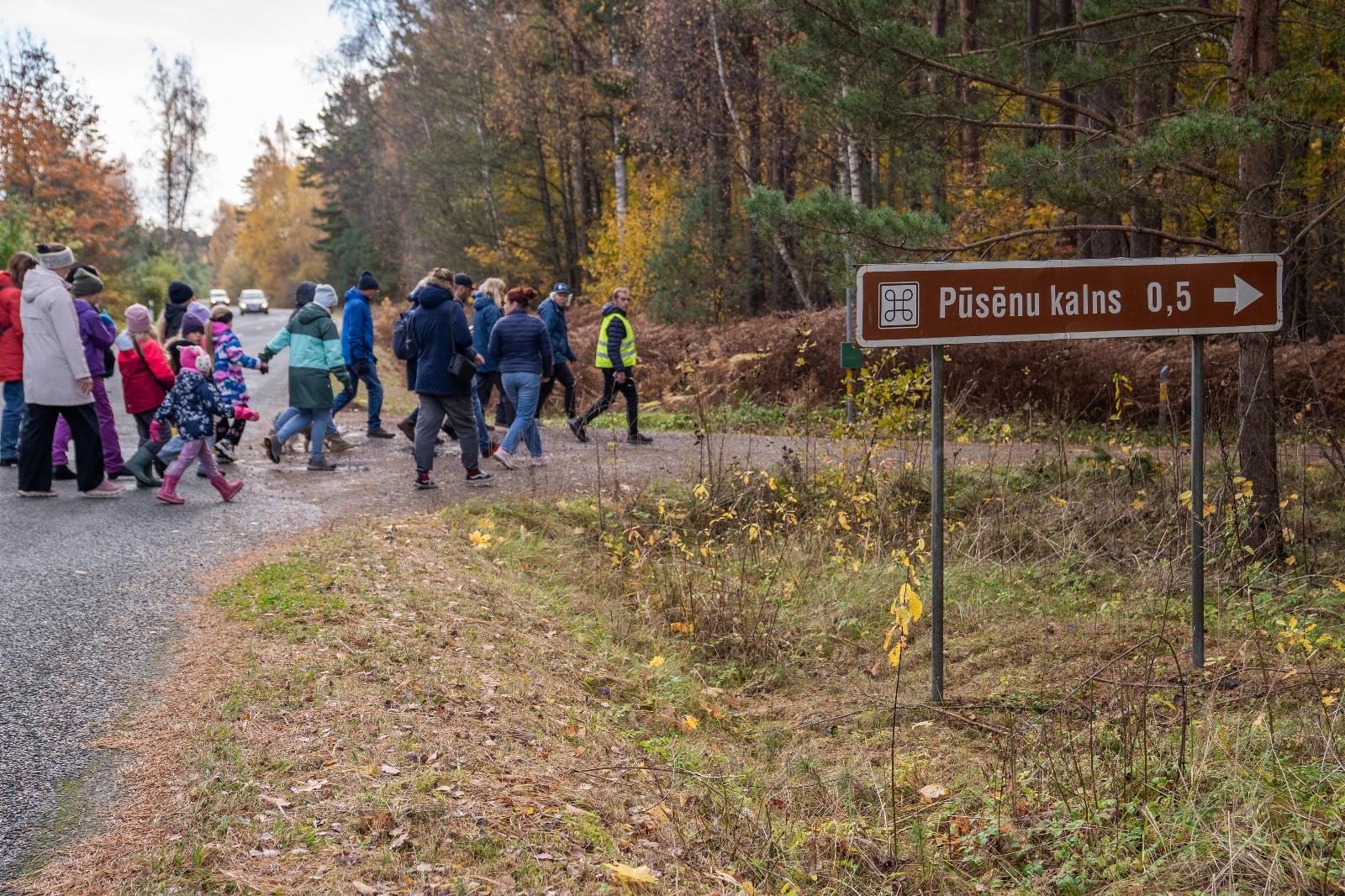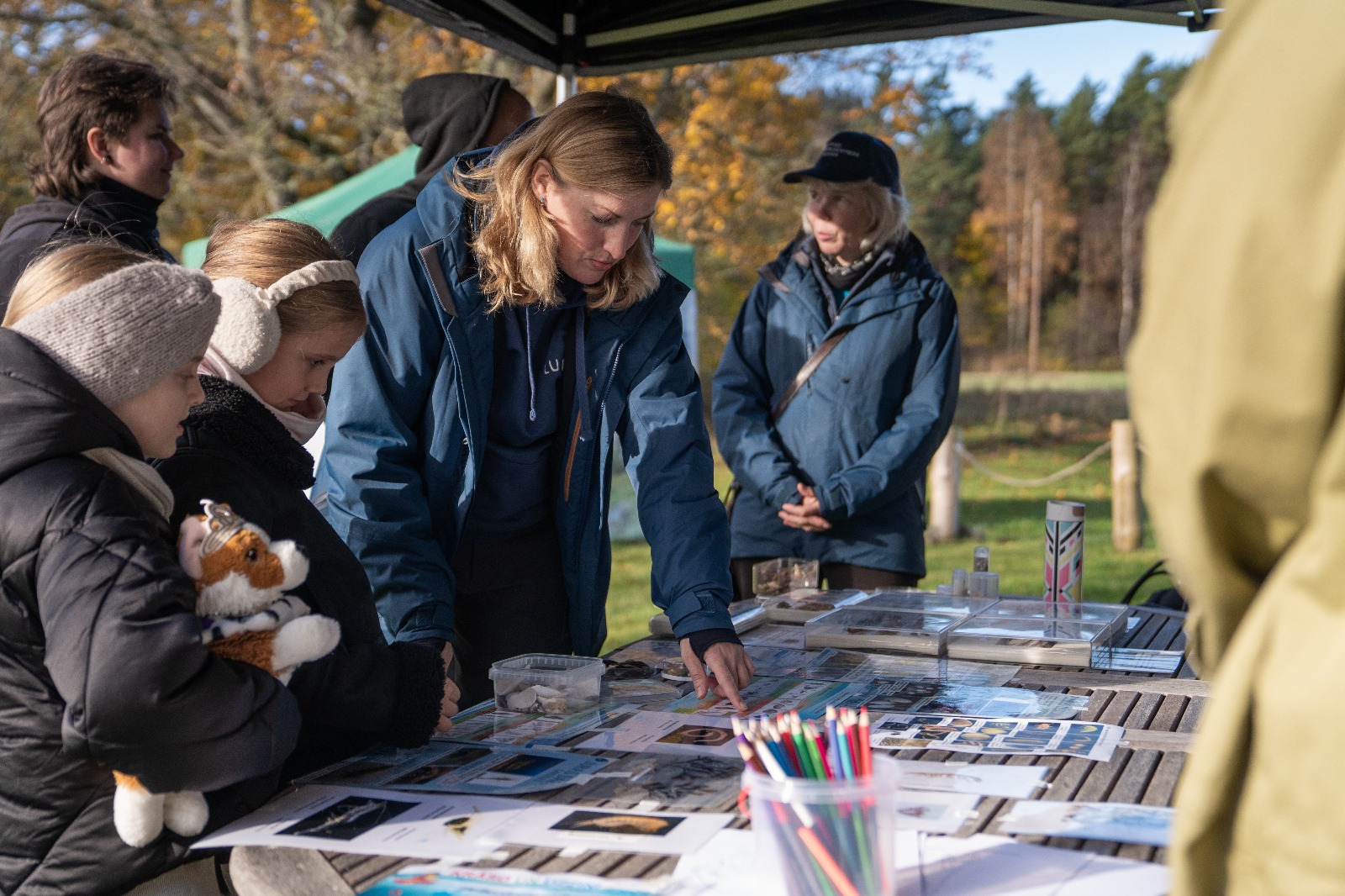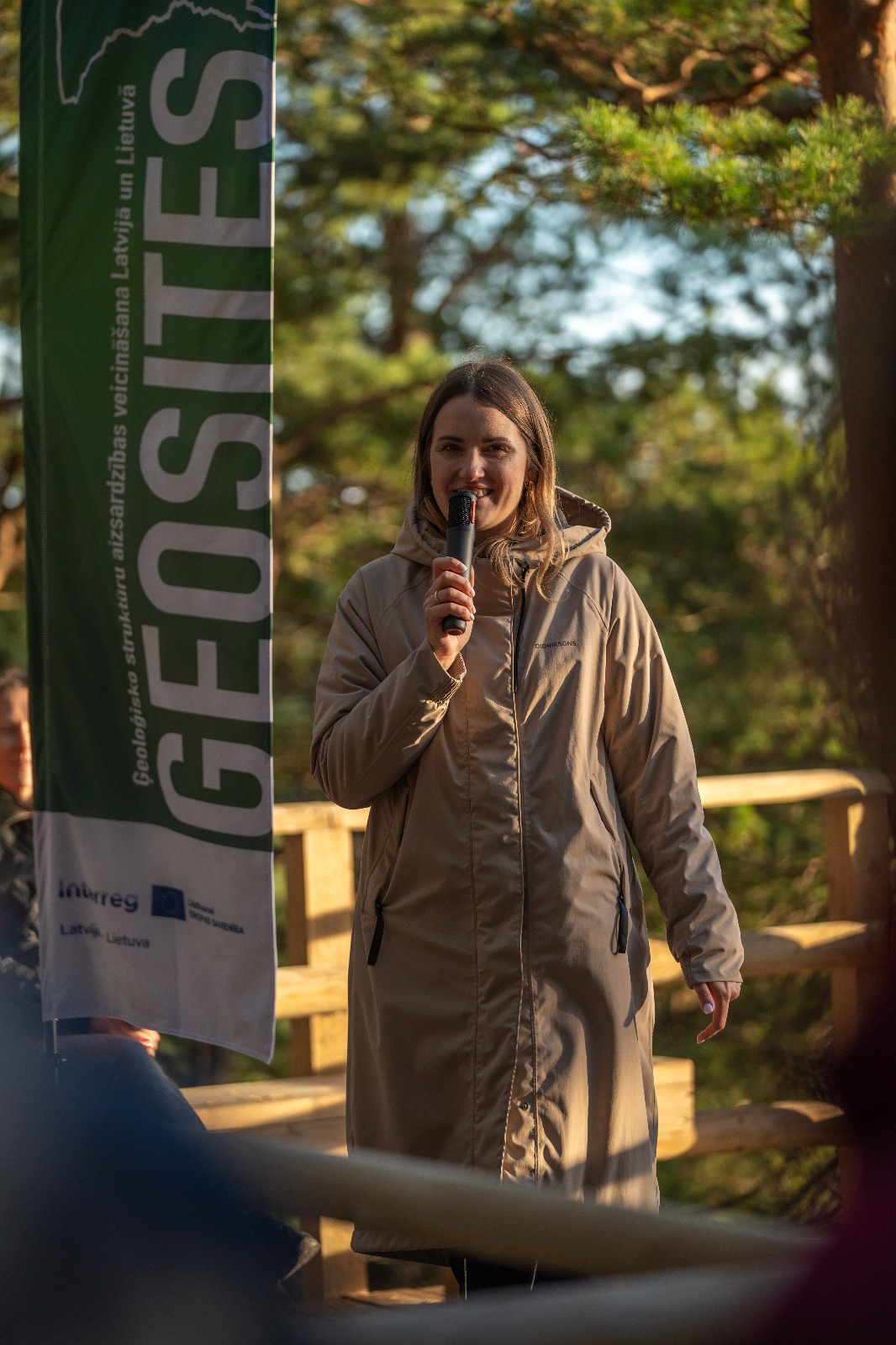
On 1 November, 2025, Geoday for the Whole Family took place in Nīca Parish, organised by the Kurzeme Planning Region within the framework of the project LL-00244 “Geosites – Promoting the Protection of Geological Structures in Latvia and Lithuania”. The event was held with the support of the Interreg Latvia–Lithuania Cross-Border Cooperation Programme 2021–2027 and this year took place in an extended format, incorporating also the “Geosite of the Year 2025” event dedicated to Pūsēnu Hill.
This combined event became the most attended Geoday so far, bringing together a record number of participants – more than 130 people. It clearly demonstrated the public’s growing interest in nature, geological processes, and the coastal environment. It was especially gratifying to see so many families with children – parents increasingly wish for their children to discover nature first-hand, through experience and exploration, learning to understand and appreciate its importance and value.
At the beginning of the day, Project Manager Anna Elizabete Upsava presented the main Geosites activities – the inventory of geosites in Kurzeme and Žemaitija, underwater research in the Baltic Sea and Lake Plateliai, as well as the development of educational models for schools and nature centres.
Ģirts Stinkulis, Associate Professor at the University of Latvia, gave a lecture “Dune Growth as a Brief Moment in the Ancient Story of Sand”, explaining the processes behind dune formation and highlighting the importance of Pūsēnu Hill, recognised as the Geosite of the Year 2025.
Meanwhile, Raimonds Reinis from the South Kurzeme Municipality shared his experience in the presentation “Explore South Kurzeme”, showing how hiking routes help people to discover the region’s nature and cultural heritage.
After the presentations, Geoday participants joined hands-on and educational workshops. The Liepāja Nature House offered the creative workshop “Painting with Soil”, the Nature Conservation Agency with its mobile nature classroom introduced visitors to coastal habitats, and researchers from the Latvian Institute of Aquatic Ecology demonstrated samples and equipment used in underwater research expeditions.
The day concluded with guided hikes to Pūsēnu Hill, led by geologist Ģirts Stinkulis and environmental guides Andris Grīnbergs and Andris Maisiņš. During the excursions, participants learned about the formation of the Bernāti dune system and Latvia’s network of geosites, while the impressive landscape of Pūsēnu Hill provided a fitting conclusion to this educational day.
Pūsēnu Hill is the highest coastal dune in Latvia, rising 37 metres above sea level. It is located within the Bernāti Nature Park, offering sweeping views over the Baltic Sea and the surrounding coastal forests. This scenic site stands out not only for its distinctive landscape and natural beauty but also as a reminder of the forces of wind, water and time that have shaped our coastline over the centuries.
This year’s Geoday proved that the public’s interest in nature and its preservation continues to grow. It was a day that brought together science, discovery and family learning in nature, showing that the stories of Kurzeme’s coast can inspire people of all ages.
The event was organised by the Kurzeme Planning Region in cooperation with the University of Latvia within the project “Geosites – Promoting the Conservation of Geological Structures in Latvia and Lithuania”, implemented under the Interreg Latvia–Lithuania Cross-Border Cooperation Programme 2021–2027.
The GEOSITES project is co-financed by the Interreg Latvia–Lithuania Cross-border Cooperation Programme 2021–2027 and represents a strategic effort to strengthen cross-border collaboration in geological heritage conservation.

